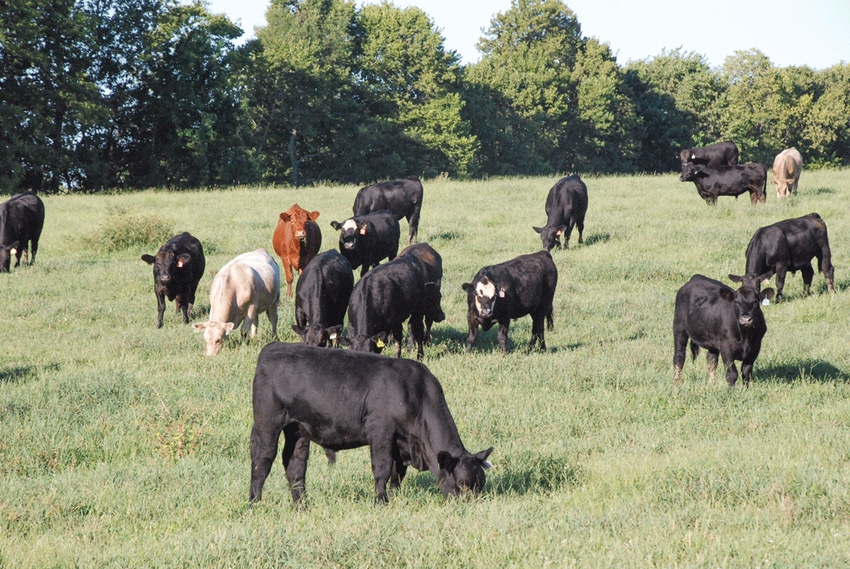October 3, 2016

“The highest and best use of the ground here is grazing livestock,” says Brenda Paul of Timberlawn Farm at Paris, Ky., this year’s BEEF National Stocker Award winner.
She’s referring to the gains forged by the unique soils in the heart of Kentucky’s bluegrass country. However, the same applies to wide swaths of the U.S. where cattle are the only way to harvest forage.
Plus, unlike last year when the market was poised to run south fast and far from fall calf prices, today’s markets point to stocker potential.
“Current feeder cattle prices suggest a strong stocker signal and also a potential retained ownership signal for cow-calf producers, at least through the stocker phase,” says Derrell Peel, Extension livestock marketing specialist at Oklahoma State University.

90 stunning fall photos from the ranch
Autumn is here, and ranchers are busy silage cutting, weaning, working calves, preg-checking, and getting ready for winter. See photos here.
Despite falling feed costs, Peel says, “All else being equal, feedlots would generally rather feed bigger, older feeder cattle. Especially with continued heavy discounts on deferred live cattle futures, feedlots are less interested in buying lighter-weight feeders and take the risk of owning them for a longer period of time.”
There’s never any guarantee, but quick penciling suggests opportunity.
For instance, you could have bought steers weighing an average of 516 pounds at OKC West in El Reno, Okla., the first week of September for an average price of $145.90 per cwt. Without adjusting for basis, and if you have any remaining faith in feeder cattle futures, the January contract was about $123 at the time.
For simplicity’s sake, figure putting 300 pounds on those steers. The expected value of gain would be near 84 cents per pound. Suppose you could put those pounds on for a cost of 50 cents per pound. That’s worth just over $100 per head.
“Of course, producers must constantly monitor feeder cattle markets — not only price levels, but price relationships by weight,” Peel says. “The current market indications can and will change at some point, but there is little reason to expect significant change in current market signals for the foreseeable future.”
Besides paying too much for calves, one of the most challenging risks in the stocker business is maintaining calf health and performance.
Timberlawn Farm deals in put-together calves most would define as high-risk, but their focus on managing wellness outcomes reduces the risk significantly.
“When we manage for wellness, fewer animals get sick and fewer non-sick animals are treated,” explains Robin Falkner, a Zoetis technical services veterinarian who works with Timberlawn. “This reduces stressful interactions with starting groups and frees up personnel time to focus on husbandry and stockman activities.
“We can easily create self-perpetuating dynamics in feeder calves, where the more we pull and treat the more we pull and treat. Conversely, the fewer we pull and treat, the fewer we pull and treat. The reason is that pulling and treating is stressful to cattle and people, puts selection pressure on our treatments, and steals time from beneficial management and husbandry activities.”

70 photos show ranchers hard at work on the farm
Readers have submitted photos of hard-working ranchers caring for their livestock and being stewards of the land. See reader favorite photos here.
Rather than focus on animal health products to reduce morbidity — then discussing which drug presumably worked or didn’t — the folks at Timberlawn focus on things like early acceptance of environment, peers and personnel; reducing the soreness associated with marketing, transportation and processing; reducing pathogen exposure; and achieving consistent, early feed intake.
Along with focusing on how to reduce the number of sick cattle —rather than finding the sick ones — in a forage-based operation, it also requires focusing on the next turn of cattle as well as the current one.
“The secret is to manage outcomes in both current and future groups simultaneously. When we get that right, things get better and better over time,” Falkner explains. “By focusing on creating easily identified wellness outcomes instead of finding sickness, a ‘stockmanship’ vs. ‘doctor’ mindset predominates management.”
You might also like:
Young ranchers, listen up: 8 tips from an old-timer on how to succeed in ranching
13 utility tractors that will boost efficiency in 2016
Burke Teichert: How to cull the right cow without keeping records
3 weaning methods compared; Which one rises to the top?
6 tips for proper electric fence grounding
9 things to include in your ag lease (that you better have in writing!)
You May Also Like

.png?width=300&auto=webp&quality=80&disable=upscale)
.png?width=300&auto=webp&quality=80&disable=upscale)
